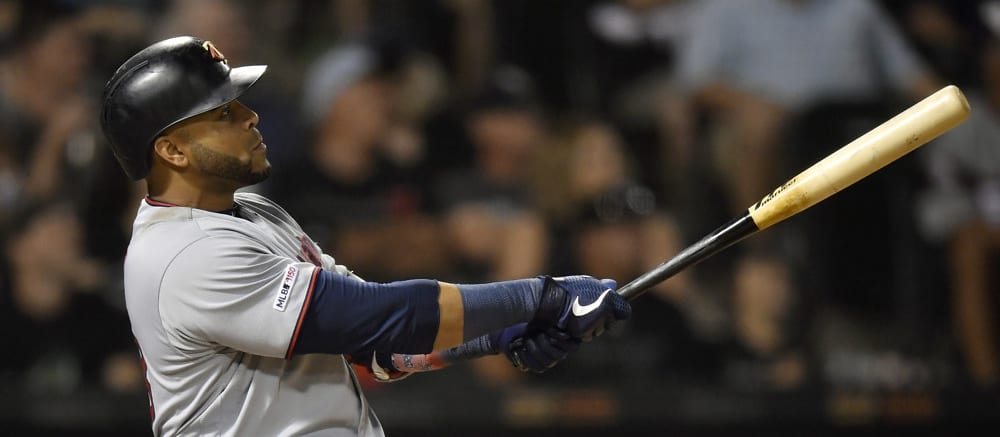This article is part of our MLB Barometer series.
Of all the factors to consider following the trade deadline, the potentially mythical "change of scenery" is perhaps the hardest to pin down. Players' xFIPs and xWOBACONs and assorted other acronyms, as vague and mysterious as they may initially seem, are concepts we're collectively learning to deal with, backed up by charts and graphs and hundreds of pages worth of quality analysis. But what are we supposed to do with an element that is essential part of the player's psyche, something we don't have access to (and hopefully never have access to)?
I'm not talking about the numerous measurable factors that shift when a player changes teams. His new home park may suit his skills better or worse than his previous one. He may have more or fewer opportunities to start. He might move into or out of a starting or closing role. He may have better or worse teammates around him. All of those factors are important, but none is extraordinarily hard to deal with.
Less measurable but still knowable are the changes that come with working with a new coaching staff. We can't know for certain how new coaches could unlock something for a player who's just been traded, but certain teams are widely known as being strong in that area. The Astros, Dodgers and Yankees are frequently mentioned as being at the top of that pile.
The quasi-mythical factor I'm referring to is a purely psychological one. It's impossible to measure with any precision (at least in
Of all the factors to consider following the trade deadline, the potentially mythical "change of scenery" is perhaps the hardest to pin down. Players' xFIPs and xWOBACONs and assorted other acronyms, as vague and mysterious as they may initially seem, are concepts we're collectively learning to deal with, backed up by charts and graphs and hundreds of pages worth of quality analysis. But what are we supposed to do with an element that is essential part of the player's psyche, something we don't have access to (and hopefully never have access to)?
I'm not talking about the numerous measurable factors that shift when a player changes teams. His new home park may suit his skills better or worse than his previous one. He may have more or fewer opportunities to start. He might move into or out of a starting or closing role. He may have better or worse teammates around him. All of those factors are important, but none is extraordinarily hard to deal with.
Less measurable but still knowable are the changes that come with working with a new coaching staff. We can't know for certain how new coaches could unlock something for a player who's just been traded, but certain teams are widely known as being strong in that area. The Astros, Dodgers and Yankees are frequently mentioned as being at the top of that pile.
The quasi-mythical factor I'm referring to is a purely psychological one. It's impossible to measure with any precision (at least in the short space I have in the introduction of this column), but it's a near certainty that it exists to at least some moderate extent. We all know that our performances in our own jobs are affected considerably by our general level of happiness. Baseball players are equally human, so there's no reason to believe they aren't subject to the same factors, even if they're elite competitors at the top of their profession. Moving to a new city and being surrounded by new co-workers can absolutely have a significant effect on someone's general mood, and that mood can undoubtedly affect a player's performance on the field.
Sadly, there's no way of knowing with anything close to precision what the effects of a change of scenery will be on a given player. It's definitely unwise to place too much stock in something so vague and hard to quantify. Still, when deciding between two relatively equal fringe players, it might be enough of a factor to at least break a tie.
RISERS
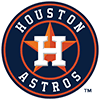 Aaron Sanchez, SP, Astros: Yes, Sanchez's excellent debut for the Astros, in which he threw six of the team's nine no-hit innings Saturday against Seattle, was just one game. And yes, it can't even be guaranteed that he'll stick in the rotation the rest of the season. But a bet on Sanchez for the rest of the season isn't really a bet on Sanchez. That would generally be ill-advised, as he owns a 5.20 ERA over his last three seasons while walking 11.7 percent of batters and striking out just 18.1 percent. Instead, it's a bet on the Astros' player development staff, a group that has a well-earned reputation as one of the league's best, most notably helping Justin Verlander and Gerrit Cole reach new levels in recent seasons. It's not a stretch to think the Astros could find something that the Blue Jays didn't, such as having him throw more curveballs and fewer fastballs as he did on Saturday, making Sanchez a worthwhile gamble.
Aaron Sanchez, SP, Astros: Yes, Sanchez's excellent debut for the Astros, in which he threw six of the team's nine no-hit innings Saturday against Seattle, was just one game. And yes, it can't even be guaranteed that he'll stick in the rotation the rest of the season. But a bet on Sanchez for the rest of the season isn't really a bet on Sanchez. That would generally be ill-advised, as he owns a 5.20 ERA over his last three seasons while walking 11.7 percent of batters and striking out just 18.1 percent. Instead, it's a bet on the Astros' player development staff, a group that has a well-earned reputation as one of the league's best, most notably helping Justin Verlander and Gerrit Cole reach new levels in recent seasons. It's not a stretch to think the Astros could find something that the Blue Jays didn't, such as having him throw more curveballs and fewer fastballs as he did on Saturday, making Sanchez a worthwhile gamble.
 Justin Verlander, SP, Astros: The Astros aggressively added pitching at the deadline, but it's not as if the top of their rotation needed help. Verlander has been as good as ever, striking out 34.1 percent of batters en route to a 2.68 ERA while making a strong case for his second career Cy Young Award. He's been particularly excellent over his last four outings, reaching double-digit strikeouts in each game while allowing a grand total of three runs. The 36-year-old has taken a commanding lead as the top pitcher in our earned auction values, a gap which could continue to grow if he keeps up his current hot streak. Even if he falls back to earth a bit, he remains one of the safest options every week, as he's only twice this season failed to throw six innings and has yet to allow more than four runs in a game.
Justin Verlander, SP, Astros: The Astros aggressively added pitching at the deadline, but it's not as if the top of their rotation needed help. Verlander has been as good as ever, striking out 34.1 percent of batters en route to a 2.68 ERA while making a strong case for his second career Cy Young Award. He's been particularly excellent over his last four outings, reaching double-digit strikeouts in each game while allowing a grand total of three runs. The 36-year-old has taken a commanding lead as the top pitcher in our earned auction values, a gap which could continue to grow if he keeps up his current hot streak. Even if he falls back to earth a bit, he remains one of the safest options every week, as he's only twice this season failed to throw six innings and has yet to allow more than four runs in a game.
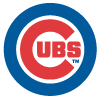 Nicholas Castellanos, OF, Cubs: Castellanos has hit the ground running with his new team, going 5-for-16 with a pair of doubles through his first four games in Chicago. While the 27-year-old probably fits best as a designated hitter, his move away from Detroit was long overdue and is quite a nice one in terms of his fantasy value. He should enjoy an easier home park at Wrigley Field, boosting his power numbers. He'll definitely enjoy hitting in front of Kris Bryant and Anthony Rizzo rather than Brandon Dixon and Jeimer Candelario. Additionally, he may have simply needed a change to jumpstart his career, as he'd seemingly gotten tired of playing out the string on a terrible Tigers team. His .273/.328/.462 slash line prior to his deadline-day move really didn't stand out, but he could be more locked in down the stretch now that he's finally playing for something for the first time since his rookie season.
Nicholas Castellanos, OF, Cubs: Castellanos has hit the ground running with his new team, going 5-for-16 with a pair of doubles through his first four games in Chicago. While the 27-year-old probably fits best as a designated hitter, his move away from Detroit was long overdue and is quite a nice one in terms of his fantasy value. He should enjoy an easier home park at Wrigley Field, boosting his power numbers. He'll definitely enjoy hitting in front of Kris Bryant and Anthony Rizzo rather than Brandon Dixon and Jeimer Candelario. Additionally, he may have simply needed a change to jumpstart his career, as he'd seemingly gotten tired of playing out the string on a terrible Tigers team. His .273/.328/.462 slash line prior to his deadline-day move really didn't stand out, but he could be more locked in down the stretch now that he's finally playing for something for the first time since his rookie season.
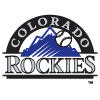 Scott Oberg, RP, Rockies: In truth, Oberg's star has been rising for quite some time. He was a competent enough but thoroughly forgettable middle reliever through his first three big-league seasons, recording a 5.05 ERA that really only plays at Coors Field. With an 18.7 percent strikeout rate and a 10.4 percent walk rate over that stretch, there really wasn't much of a reason to believe that he'd develop into a relief ace any time soon. Last season, he raised his strikeout rate to 25.0 percent while cutting his ERA to an impressive 2.45. On Friday, he was named the Rockies' closer on at least a temporary basis, an assignment that's hard to argue with given his incredible 1.53 ERA. It's hard to see him keeping the ERA quite that low the rest of the way, as it's taken an 85 percent strand rate and a .234 BABIP to get him there, but it's not hard to see him keeping the closer job even with a fair amount of regression given that the previous closer, Wade Davis, owns a 6.61 ERA.
Scott Oberg, RP, Rockies: In truth, Oberg's star has been rising for quite some time. He was a competent enough but thoroughly forgettable middle reliever through his first three big-league seasons, recording a 5.05 ERA that really only plays at Coors Field. With an 18.7 percent strikeout rate and a 10.4 percent walk rate over that stretch, there really wasn't much of a reason to believe that he'd develop into a relief ace any time soon. Last season, he raised his strikeout rate to 25.0 percent while cutting his ERA to an impressive 2.45. On Friday, he was named the Rockies' closer on at least a temporary basis, an assignment that's hard to argue with given his incredible 1.53 ERA. It's hard to see him keeping the ERA quite that low the rest of the way, as it's taken an 85 percent strand rate and a .234 BABIP to get him there, but it's not hard to see him keeping the closer job even with a fair amount of regression given that the previous closer, Wade Davis, owns a 6.61 ERA.
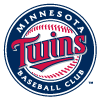 Nelson Cruz, OF, Twins: Cruz may be 39, but he doesn't appear to be close to done. He's been simply incredible over his last 17 games, hitting .383/.471/1.083 with 13 home runs, including a pair of three-homer games. That's given him a remarkable .292/.385/.646 slash line on the season, good for a 163 wRC+, the second-highest mark of his 15-year career. His 26.9 percent strikeout rate is the highest of his career, but it hasn't seemed to matter, as his quality of contact has been excellent. His .661 expected slugging percentage suggests that, if anything, he's slightly underachieved (though you'd expect a player with his lack of speed to fall slightly short of his expected numbers), and he's improved his barrel rate from 13.8 percent to 22.3 percent, second only to Joey Gallo.
Nelson Cruz, OF, Twins: Cruz may be 39, but he doesn't appear to be close to done. He's been simply incredible over his last 17 games, hitting .383/.471/1.083 with 13 home runs, including a pair of three-homer games. That's given him a remarkable .292/.385/.646 slash line on the season, good for a 163 wRC+, the second-highest mark of his 15-year career. His 26.9 percent strikeout rate is the highest of his career, but it hasn't seemed to matter, as his quality of contact has been excellent. His .661 expected slugging percentage suggests that, if anything, he's slightly underachieved (though you'd expect a player with his lack of speed to fall slightly short of his expected numbers), and he's improved his barrel rate from 13.8 percent to 22.3 percent, second only to Joey Gallo.
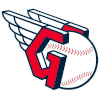 Franmil Reyes, OF, Indians: Reyes hasn't done much of note in his first four games for Cleveland, but his deadline-day move from San Diego nevertheless raises his stock. Getting out of Petco Park (even the current, more moderate version) will certainly help him maximize his power. Additionally, his playing-time situation is much improved, as the Padres' crowded outfield meant he'd started just 79 percent of his former team's games. He should start nearly every game in Cleveland, mostly as a designated hitter, the defensive position that suits him best. Even if he hadn't changed teams, there was already reason to believe his numbers would improve down the stretch, as he owns and expected batting average of .272 and an expected slugging percentage of .549, noticeably better than his actual .250 and .527 marks, so the trade only adds value to a player who already appeared to have a promising future.
Franmil Reyes, OF, Indians: Reyes hasn't done much of note in his first four games for Cleveland, but his deadline-day move from San Diego nevertheless raises his stock. Getting out of Petco Park (even the current, more moderate version) will certainly help him maximize his power. Additionally, his playing-time situation is much improved, as the Padres' crowded outfield meant he'd started just 79 percent of his former team's games. He should start nearly every game in Cleveland, mostly as a designated hitter, the defensive position that suits him best. Even if he hadn't changed teams, there was already reason to believe his numbers would improve down the stretch, as he owns and expected batting average of .272 and an expected slugging percentage of .549, noticeably better than his actual .250 and .527 marks, so the trade only adds value to a player who already appeared to have a promising future.
FALLERS
 Chris Sale, SP, Red Sox: Just when Sale's early season struggles seemed to be behind him, things started falling apart again. He's allowed five or more runs in five of his last seven starts, giving him a 7.47 ERA over that stretch and bringing his season mark up to 4.68. It's worth noting, though, that there have been some encouraging signs in his peripherals even over that poor stretch. He struck out 32.7 percent of batters over that stretch, not quite as good as the 40.5 percent mark he recorded over his previous 12 outings, but a top-tier number nonetheless. His xFIP over his last seven starts, a stat which sees only his strikeout, walk and groundball rates, comes in at an ace-like 3.06. What xFIP doesn't see, however, is hitters' quality of contact. His hard-hit rate jumped to 41.7 percent after sitting at 32.9 percent over the preceding 12 outings, and his HR/FB rate jumped from 10.9 percent to 37.0 percent.
Chris Sale, SP, Red Sox: Just when Sale's early season struggles seemed to be behind him, things started falling apart again. He's allowed five or more runs in five of his last seven starts, giving him a 7.47 ERA over that stretch and bringing his season mark up to 4.68. It's worth noting, though, that there have been some encouraging signs in his peripherals even over that poor stretch. He struck out 32.7 percent of batters over that stretch, not quite as good as the 40.5 percent mark he recorded over his previous 12 outings, but a top-tier number nonetheless. His xFIP over his last seven starts, a stat which sees only his strikeout, walk and groundball rates, comes in at an ace-like 3.06. What xFIP doesn't see, however, is hitters' quality of contact. His hard-hit rate jumped to 41.7 percent after sitting at 32.9 percent over the preceding 12 outings, and his HR/FB rate jumped from 10.9 percent to 37.0 percent.
 Wade Davis, RP, Rockies: If Davis wasn't making closer money the rest of this season and the next, he might have lost his closer job a long time ago. His removal from the role in favor of Scott Oberg is long overdue. ERAs rarely look good at Coors Field, but Davis' 6.61 mark this season is nowhere near closer material, regardless of what park he calls home. The 33-year-old is simply not the pitcher he once was. After posting a strikeout rate as high as 39.1 percent in 2014 and recording a still strong 29.9 percent last season, he's struck out just 22.4 percent of batters this year, slightly below league average. He's paired that with a career-high 13.2 percent walk rate. There doesn't appear to be any reason to expect that he'll suddenly revert to his former self and reclaim the ninth inning for the stretch run.
Wade Davis, RP, Rockies: If Davis wasn't making closer money the rest of this season and the next, he might have lost his closer job a long time ago. His removal from the role in favor of Scott Oberg is long overdue. ERAs rarely look good at Coors Field, but Davis' 6.61 mark this season is nowhere near closer material, regardless of what park he calls home. The 33-year-old is simply not the pitcher he once was. After posting a strikeout rate as high as 39.1 percent in 2014 and recording a still strong 29.9 percent last season, he's struck out just 22.4 percent of batters this year, slightly below league average. He's paired that with a career-high 13.2 percent walk rate. There doesn't appear to be any reason to expect that he'll suddenly revert to his former self and reclaim the ninth inning for the stretch run.
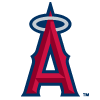 Justin Upton, OF, Angels: This may wind up being a lost season for Upton, if it isn't already. After a sprained toe kept him out of action until mid-June, he looked decent enough in his first 20 games of the season, hitting .270/.349/.459. Over his last 12 games, he's slumped to a .119/.216/.238 line, bringing his overall season mark to .216/.299/.379. His 31.3 percent strikeout rate is the highest of his career, and he isn't hitting the ball with the same authority as he used to when he does make contact. His hard-hit rate has dropped from 47.4 percent to 41.6 percent, while his exit velocity has fallen from 90.7 mph to 87.1 mph. While it's certainly not impossible to see him improve down the stretch as he gets further from his injury, he's given little reason for optimism.
Justin Upton, OF, Angels: This may wind up being a lost season for Upton, if it isn't already. After a sprained toe kept him out of action until mid-June, he looked decent enough in his first 20 games of the season, hitting .270/.349/.459. Over his last 12 games, he's slumped to a .119/.216/.238 line, bringing his overall season mark to .216/.299/.379. His 31.3 percent strikeout rate is the highest of his career, and he isn't hitting the ball with the same authority as he used to when he does make contact. His hard-hit rate has dropped from 47.4 percent to 41.6 percent, while his exit velocity has fallen from 90.7 mph to 87.1 mph. While it's certainly not impossible to see him improve down the stretch as he gets further from his injury, he's given little reason for optimism.
 Jorge Alfaro, C, Marlins: Alfaro came out of the gate strong for his new team, hitting .282/.335/.472 with nine homers over his first 46 games. His .807 OPS over that stretch was better than J.T. Realmuto's .781, to the frustration of many Phillies fans. Since that point, however, Alfaro has fallen hard, batting just .232/.246/.336 in his last 40 games. That downturn in power is concerning, though he does already have a career-high 11 homers, tied for a respectable 13th among catchers. His primary problem is that he's walked just a single time in his last 40 games. That doesn't directly hurt fantasy owners, other than those in OBP leagues, but it does indicate a worrisome lack of plate discipline, especially when combined with his poor 34.0 percent strikeout rate on the season. It's hard to see the 26-year-old taking the next step to becoming one of the better offensive catchers in the league while his inability to control the plate remains such a glaring weakness.
Jorge Alfaro, C, Marlins: Alfaro came out of the gate strong for his new team, hitting .282/.335/.472 with nine homers over his first 46 games. His .807 OPS over that stretch was better than J.T. Realmuto's .781, to the frustration of many Phillies fans. Since that point, however, Alfaro has fallen hard, batting just .232/.246/.336 in his last 40 games. That downturn in power is concerning, though he does already have a career-high 11 homers, tied for a respectable 13th among catchers. His primary problem is that he's walked just a single time in his last 40 games. That doesn't directly hurt fantasy owners, other than those in OBP leagues, but it does indicate a worrisome lack of plate discipline, especially when combined with his poor 34.0 percent strikeout rate on the season. It's hard to see the 26-year-old taking the next step to becoming one of the better offensive catchers in the league while his inability to control the plate remains such a glaring weakness.

